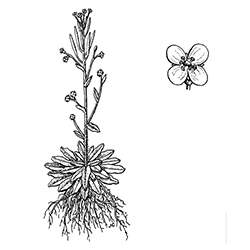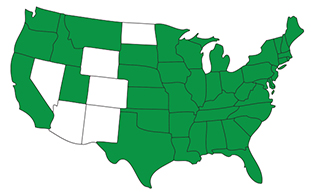

Mouse-Ear Cress
Arabidopsis thaliana
Mouse-ear Cress is a winter annual broadleaf weed that is also known as Sisymbrium thaliknum and Arabidopsis thaliana.
Identify

Rosette

Entire

Oblong
Mouse-ear Cress can be identified by its branched, rough and often hairy base. Its flowering stems grow vertically from a basal rosette of leaves on short petioles. The stems can grow up to a foot in height, making this broadleaf weed stand out from other weeds. Blooming from April through May, Mouse-ear Cress features tiny flowers about 1/8 of an inch in diameter. The flowers are made up of four white petals with four light-green sepals, several yellow-green stamens and a pistil with a single style. Reproduction occurs by seeds produced in long, slender seedpods. Mouse-ear Cress is often found growing side by side with fellow broadleaf plant Whitlow Grass.
Life Cycle
Preferring open ground with sandy soils, this broadleaf weed often grows in fields, pastures, lawns, waste areas and along railroads and roadsides. Mouse-ear Cress can be found throughout much of the continental United States.

Control
Arabidopsis thaliana can be difficult to control using cultural weed control methods alone. Although good lawn-mowing and watering habits can help fight this weed, you will need professionally selected and applied broadleaf weed killers to completely remove it from your lawn.







